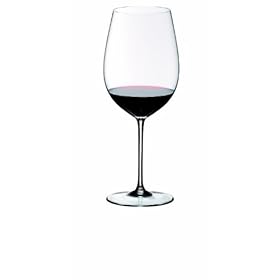At this stage, I’d wager that the iPhone will not exist. But before I go into that I’d like to provide some link love for people that write better than I. These things only tend to happen when I happen to read similar ideas in dissimilar articles, especially since my del.icio.us client broke. It’s just a coincidence thing, but the (localised) convergence of ideas makes me want to write.
Everyone’s favourite chocolate-inspired developer, Scott Stevenson, writes about user interfaces, primarily concerned with the (perhaps) storm in a teacup debate about whether bells and whistles are really necessary. And provides the first reference I’ve seen in years for the (classic) Mac OS Oscar the Grouch trash animation. “Oh I love trash!”. Anyway, let’s see if I can extract the idea he talks about:
Up until the last few years, a Mac app with a nonstandard user interface usually came about because the programmer didn’t know much about the Mac. They didn’t see any particular problem with using a push button as toggle switch. […] The other major difference is that this new interface concepts are designed by people that specialize in it. […] This is in stark contrast to Unix developers in the past who would basically make educated guesses about user interface.
Hold that thought for later — arbitrary engineers don’t know interfaces. In an unrelated article on Apple’s possible “iPhone”, jesper from sweden writes about how phone software (that is, the user interface of mobile phones) is, give or take, atrocious:
I have a Sony Ericsson model that can nail a note to the standby menu screen, and the Nokia I used to have slapped the Sony Ericsson around the block when it came to the address book.
I just checked, and it takes greater than six button presses, after the message is written, to send a message on my Sony Ericsson phone. Back when Nokia became popular, it was because they managed to design their entire interface around two buttons (the big button and cancel) and two navigation buttons, up and down — and it was the simplest, easiest phone on the market to use. The self imposed hardware restrictions forced them to design a good user interface.
Somewhere in there, the whole idea of simplicity was totally lost, and within a couple of generations Nokia phones were no better than all the others, with up to five or six or seven buttons to do various things and then four navigation buttons. Is it any wonder that people want “just a phone” these days?
There are so many preconceived notions I have about mobile phones, from how ring tones are annoying, to how predictive text could be so much better — give me a damn complete dictionary and make it pre-emptive and that’s a good start. To how the whole communication model just kind of happened; no-one thought through the popularity of asynchronous conversations via text messages. Could you do the same thing with voice? (Google just implemented something similar with Google Talk.)
What I’m trying to say is that there is a mold out from which Apple could very much break. Apple could design a phone without a numeric keypad. Think about it. When do you actually have to type numbers into a phone these days? Is it often enough to dominate the hardware interface?
Finally, Brian Tiemann writes about how the iPhone might not be a phone, but just an iPod. And he nails it. Why would Apple release a separate product “the iPhone”? John Gruber wrote earlier this year “Apple’s only serious competition [to the iPod] to date has been itself.”
It would be ludicrous to put aside the huge mindshare behind their most successful product and supplant the iPod with a superior device. “Are you getting an iPod?” — “Nah, the iPhone is so much better”. Apple trademarks names it doesn’t use just so other people can’t. Just as they did with the “iPod photo” (!) and the “iPod video”, Apple will release the “iPod phone” or “iPod talk” whose functionality will soon enough become ubiquitous enough that the suffix is dropped. (Let’s face it; the rumours are solid enough that something’s going on.)
Apple doesn’t seem to think its customers will be confused by having multiple products, over time, with the same name. There’s no need for a new name. It’s not the iPod X34, replaced by the iPod GH87, with its baby brother iPod LMP331. They’re just iPods, and people, unsurprisingly, seem to prefer the simpler title (if they even notice the dichotomy in nomenclature).
In summary: Apple’s gonna make a phone. But it’s going to be an iPod. And luckily, this time round, they didn’t paint themselves into a corner with an overly restrictive name for their product.
And that’s a selection of thoughts in my head from earlier this afternoon.







